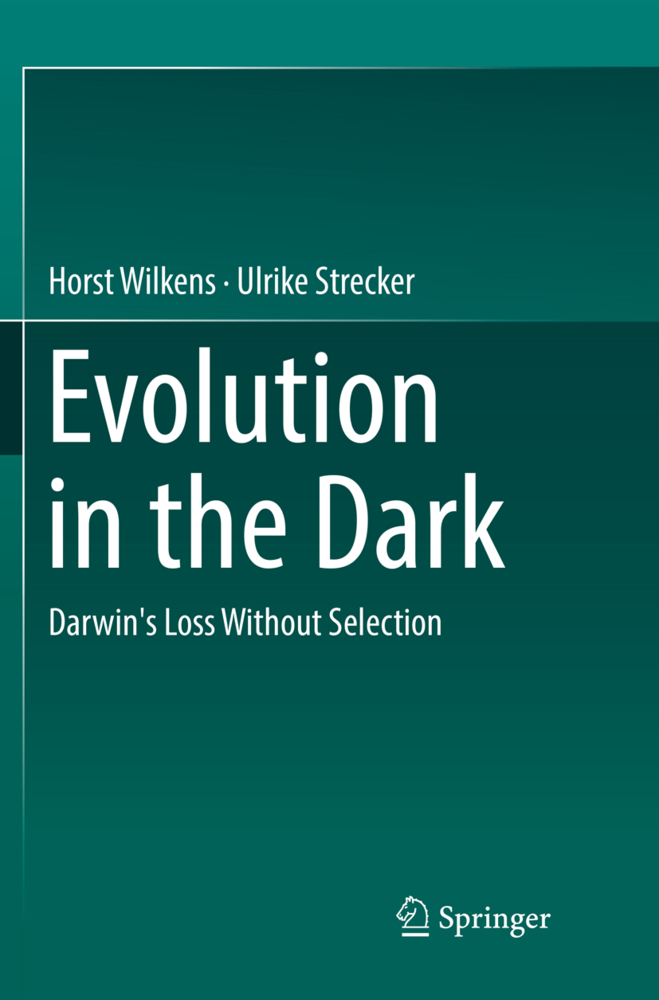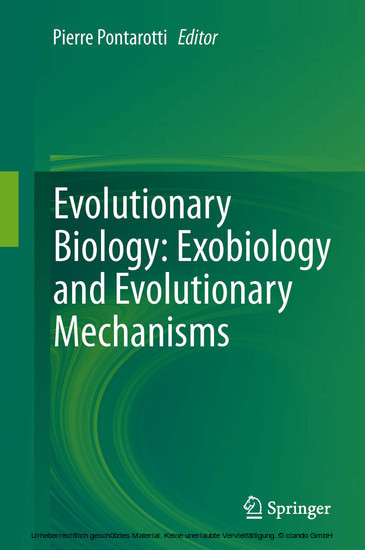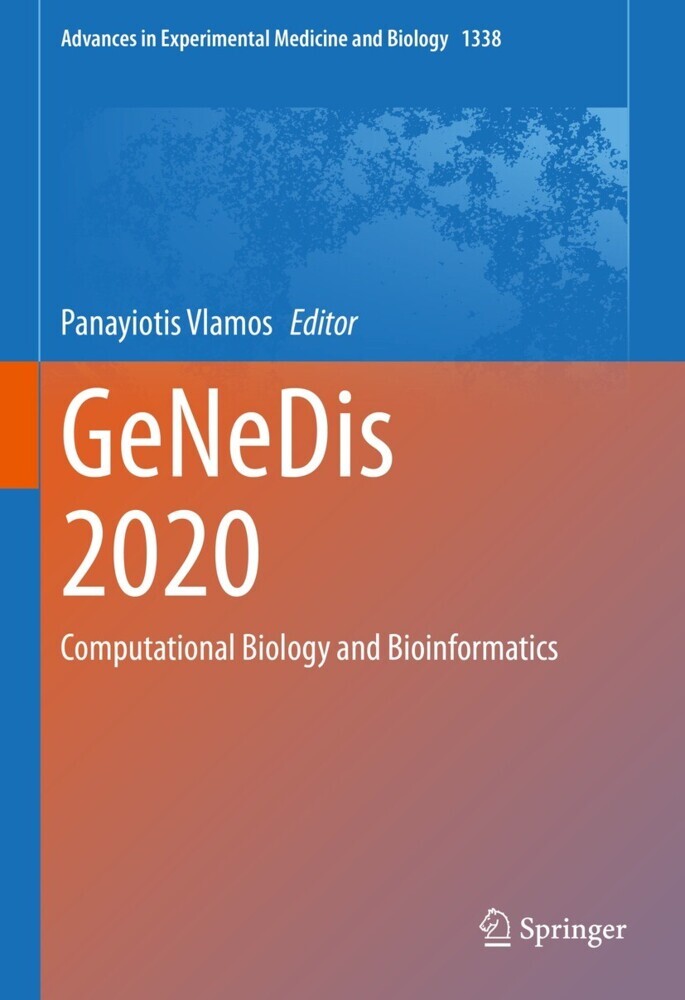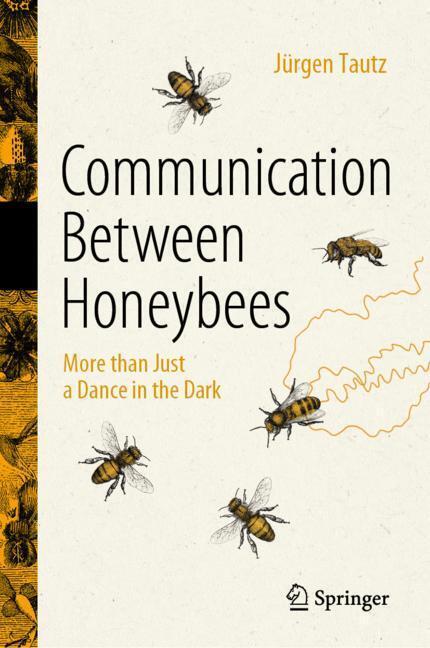Evolution in the Dark
Evolution in the Dark
This book provides fascinating insights into the development and genetics of evolutionary processes on the basis of animals living in the dark, such as the Astyanax cave fish.
Biologically functionless traits show high variability, which results from neutral deleterious mutations no longer being eliminated by natural selection, which normally acts to preserve functional capability. These negative mutations accumulate until the traits they are responsible for become rudimentary or even lost.
The random genetic basis of regressive evolution is in accordance with Nei's Neutral Theory of Molecular Evolution, which applies to the molecular level. Such processes are particularly conspicuous in species living in constant darkness, where, for example in Astyanax, all traits depending on the exposure to light, like eyes, pigmentation, visually triggered aggressive behaviour, negative phototaxis, and several peripheral outcomes of circadian rhythmicity, are useless and diminish. In compensation constructive traits like taste, olfaction or the lateral line senses are improved by selection and do not show variability. Regressive and constructive traits inherit independently, proving that the rudimentation process is not driven by pleiotropic linkage between them. All these traits are subject to mosaic evolution and exhibit unproportional epistatic gene effects, which play an important role in evolutionary adaptation and improvement.
Offering valuable evolutionary insights and supplemented by a wealth of illustrations, this book will appeal to evolutionary and developmental biologists alike.
Prof. Dr. Horst Wilkens
Dr. Ulrike Strecker
Centrum für Naturkunde - CeNak - Center of Natural History
Universität Hamburg - Zoologisches Museum
Martin-Luther-King-Platz 3
20146 Hamburg - Germany
e-mails: Wilkens@zoologie.uni-hamburg.de; Strecker@uni-hamburg.de
1;Acknowledgements;5 2;Contents;6 3;1: Evolution in the Dark: Introduction;9 3.1;References;10 4;2: The Role of Rudimentation in Evolution;11 4.1;References;19 5;3: Diversity and the Phylogenetic Age of Cave Species;21 5.1;3.1 Mexico and the Peri-Caribbean Islands: A Hot Spot of Aquatic Cave Species Diversity;22 5.2;3.2 Strongly Eye-Reduced Cave Species;24 5.3;3.3 Lesser and Variably Eye-Reduced Cave Species;28 5.4;References;41 6;4: Surface and Cave Populations of Mexican Astyanax;45 6.1;4.1 Astyanax Surface Fish;46 6.2;4.2 Astyanax Cave Fish;46 6.3;4.3 Phylogeography and Speciation of Surface and Cave Astyanax;52 6.3.1;4.3.1 Invasion of Surface Astyanax from South America and Origin of the Cave Forms;52 6.3.2;4.3.2 Multiple Origin of Cave Forms;56 6.3.3;4.3.3 Population Genetic Diversity of Cave Populations;57 6.4;References;58 7;5: Complexity of Interrelationship Between Astyanax Cave and Surface Fish;61 7.1;5.1 General Remarks;62 7.2;5.2 Strongly Eye- and Pigment-Reduced Cave Populations;62 7.2.1;5.2.1 Pachón Cave Fish;63 7.2.2;5.2.2 Yerbaniz Cave Fish;65 7.3;5.3 Variably Eye- and Pigment-Reduced (VEP) Cave Populations;66 7.3.1;5.3.1 Micos Cave Fish;66 7.3.2;5.3.2 Chica Cave Fish;71 7.3.3;5.3.3 Caballo Moro Cave Fish;74 7.3.4;5.3.4 Molino Cave Fish;75 7.4;5.4 Role of Introgressive Hybridization;76 7.5;5.5 Speciation and Taxonomy of Astyanax Surface and Cave Fish;78 7.5.1;5.5.1 Surface Fish;78 7.5.2;5.5.2 Cave Fish;80 7.6;References;82 8;6: Regressive and Constructive Traits in Astyanax Surface and Cave Fish;86 8.1;6.1 General Remarks;87 8.2;6.2 Reproductive Behaviour;89 8.3;6.3 Sex Determination;91 8.4;6.4 Auditory Capacities;93 8.5;6.5 Lateral Line System;93 8.6;6.6 Taste;98 8.7;6.7 Olfaction;101 8.8;6.8 Feeding Behaviour and Food Uptake;101 8.9;6.9 Metabolic Adaptation to Permanent or Periodic Low Food Supply;105 8.10;6.10 Overall Sleep and Activity Patterns;109 8.11;6.11 Egg Yolk Content;111 8.12;6.12 Aggressive Behavioural Patterns in Astyanax;113 8.13;6.13 Dorsal Light Reaction;119 8.14;6.14 Phototactic Behaviour;121 8.15;6.15 Pineal Organ;123 8.16;6.16 Circadian Rhythm;125 8.17;6.17 Fright Reaction;134 8.18;6.18 Schooling and Shoaling Behaviour;136 8.19;6.19 Scales;139 8.20;6.20 Pigmentation;140 8.20.1;6.20.1 Melanophores;140 8.20.2;6.20.2 Brown Gene (Mc1r);141 8.20.3;6.20.3 Albino Gene (Oca2);144 8.20.4;6.20.4 Guanine and Carotinoids;145 8.21;6.21 Eye;147 8.21.1;6.21.1 Morphology and Histology of the Eyes of the Surface and the SEP Astyanax Cave Fish;147 8.21.2;6.21.2 Visual Pigments;149 8.21.3;6.21.3 Size and Histology of the Eye in the VEP Cave Fish and in the Crossings Between Surface and Cave Fish;151 8.21.3.1;6.21.3.1 Crossings of the SEP Cave Fish;151 8.21.3.2;6.21.3.2 VEP Cave Fish and Crossings;152 8.21.3.3;6.21.3.3 Histology of Eye Structures in the Crossings Between SEP Cave and Surface Fish and in VEP Cave Fish;152 8.21.4;6.21.4 Ontogeny of Eye Development in the SEP Cave Fish;155 8.21.5;6.21.5 Genetic Basis of Eye Development;163 8.21.6;6.21.6 The Role of the Lens in Eye Development;168 8.21.7;6.21.7 Ontogenetic Eye Regression and Head Formation;169 8.21.8;6.21.8 Root Effect;172 8.22;6.22 Brain;173 8.23;6.23 Comparison of the Genetics of Complex Regressive and Constructive Traits;176 8.23.1;6.23.1 Phenotypic Manifestation and Gene Expression;176 8.23.1.1;6.23.1.1 Eye;176 8.23.1.2;6.23.1.2 Melanophore Number;178 8.23.1.3;6.23.1.3 Feeding Posture;179 8.23.1.4;6.23.1.4 Number of Free Neuromasts;179 8.23.1.5;6.23.1.5 Number of Taste Organs;179 8.23.1.6;6.23.1.6 Sleep Duration;180 8.23.2;6.23.2 Comparison of Phenotypic Manifestation;180 8.23.3;6.23.3 Genetics of Phylogenetically Young VEP Cave Fish;182 8.23.4;6.23.4 Significance of Unproportional Epistatic Gene Effect;184 8.23.5;6.23.5 Nature of Genes Responsible for Complex Traits;185 8.24;References;186 9;7: Mechanisms of Regressive Evolution;197 9.1;7.1 Deleterious Risk;198 9.2;7.2 Food Limitation and Energy Economy;198 9.3;7.3 Quantitative Trait Loci Pola
| ISBN | 9783662545126 |
|---|---|
| Artikelnummer | 9783662545126 |
| Medientyp | E-Book - PDF |
| Copyrightjahr | 2017 |
| Verlag | Springer-Verlag |
| Umfang | 223 Seiten |
| Sprache | Englisch |
| Kopierschutz | Digitales Wasserzeichen |










